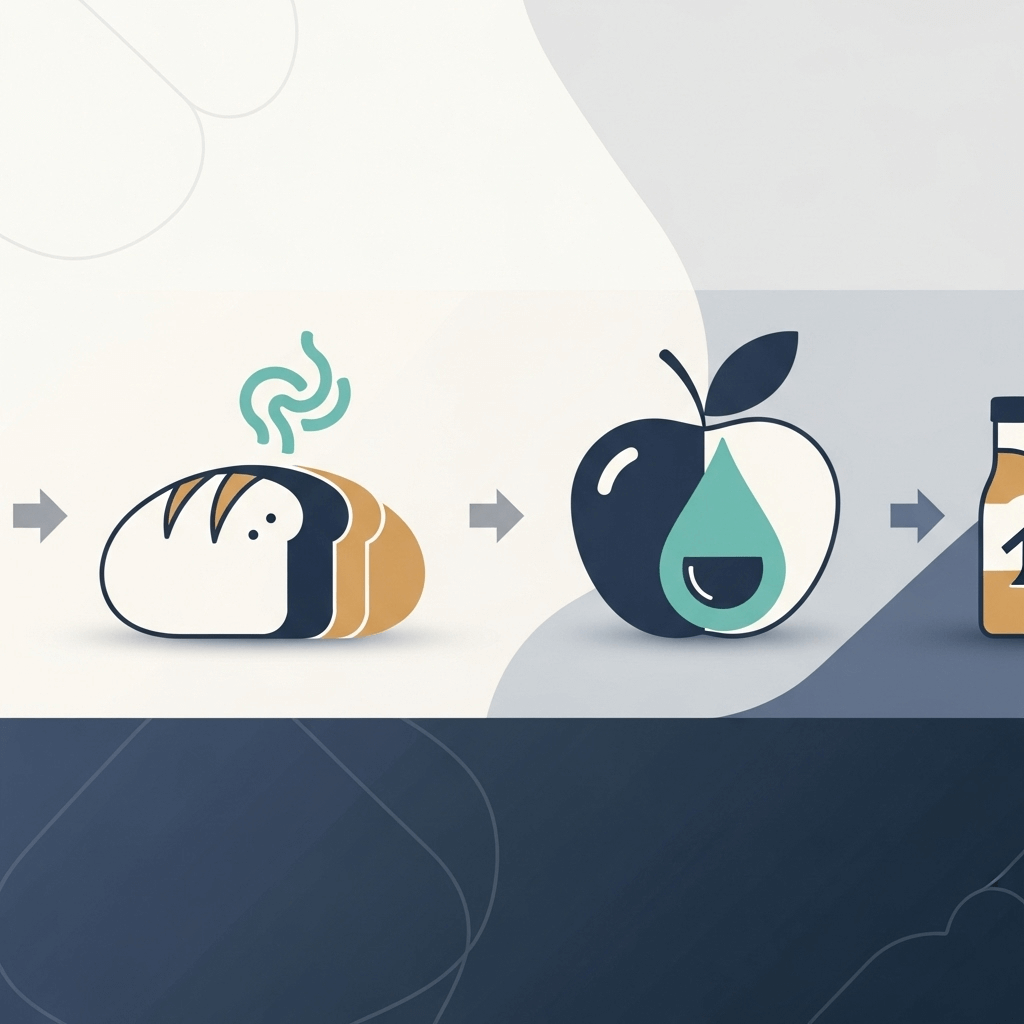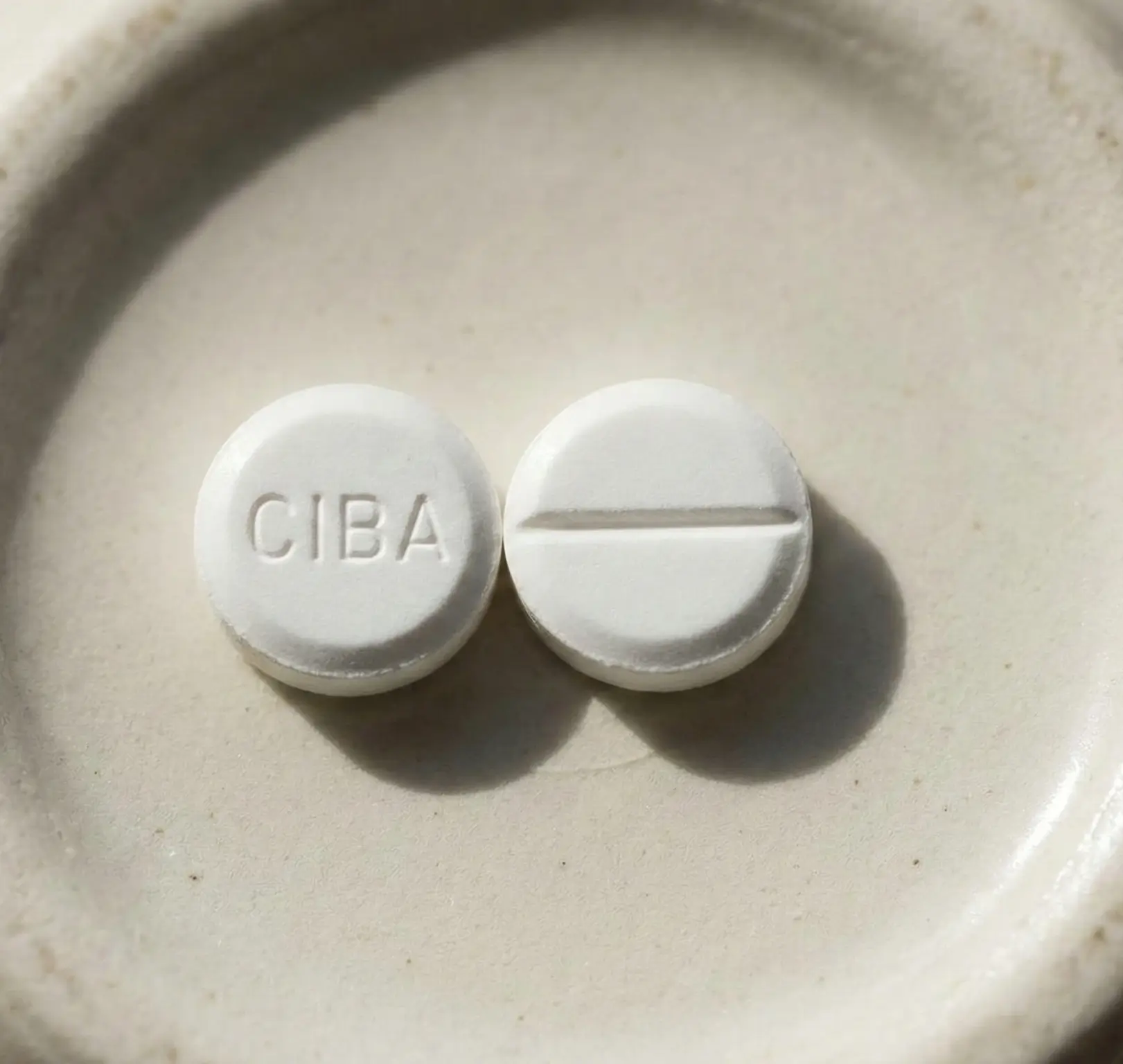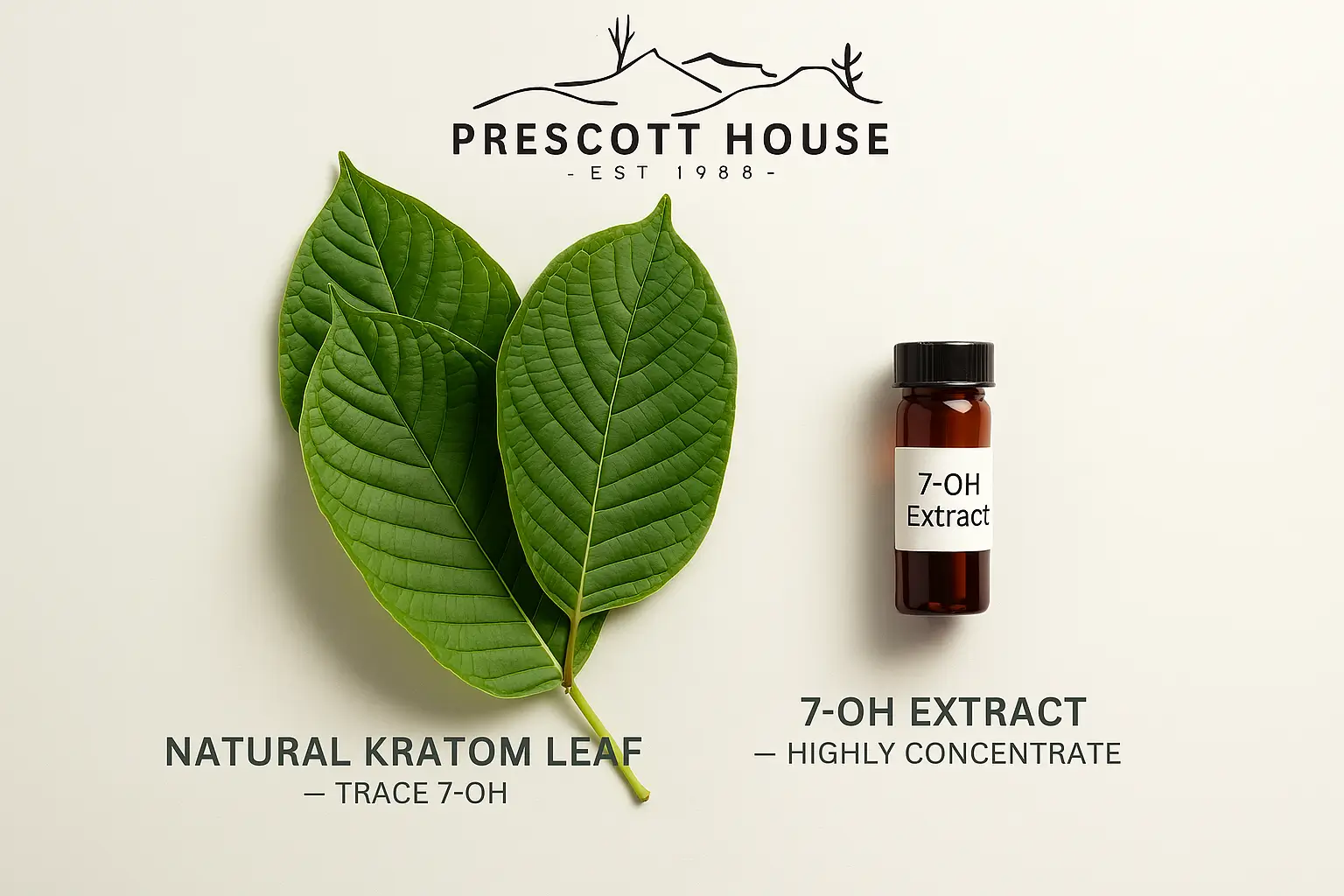Uncorking the Truth: A Guide to Alcohol in Everyday Foods
Have you ever considered that the bread you toast for breakfast or the vanilla extract in your favorite cookies contains alcohol? While we often associate alcohol with beverages, it's a common, and sometimes surprising, ingredient in many foods we eat daily. At Prescott House, we've encountered numerous individuals who were shocked to discover they'd been consuming alcohol without realizing it - sometimes causing anxiety for those in early recovery who thought they'd accidentally compromised their sobriety.
The reality is that alcohol exists in our food supply in ways that might surprise you. This guide will explore the different types of alcohol found in food, why they're there, and what it means for your health and recovery journey. Understanding these hidden sources can empower you to make informed choices about what you consume.
The Main Culprit - Ethanol in Your Pantry

What is Ethanol?
Ethanol, also known as ethyl alcohol, is the exact same type of alcohol found in beer, wine, and spirits. This isn't some distant chemical cousin - it's the real deal. Ethanol occurs naturally as a byproduct of fermentation, a biological process where yeasts consume sugars and convert them into alcohol and carbon dioxide.
What makes this particularly interesting is that fermentation happens everywhere in nature. Those overripe bananas sitting on your counter? They're actively producing small amounts of ethanol right now. The process is so fundamental to life that even our own bodies produce trace amounts of ethanol through normal metabolic processes.
Why is Ethanol in Food?
Food manufacturers don't add ethanol to be sneaky - they use it for legitimate, practical reasons that have been standard in food production for centuries.
Flavoring:Ethanol serves as an exceptional solvent for extracting and preserving flavors from natural ingredients. When you buy vanilla extract in the United States, federal regulations actually require it to contain alcohol. The alcohol draws out the complex flavor compounds from vanilla beans that water simply cannot capture. Without alcohol, you'd get a weak, watery imitation of true vanilla flavor.
Preservative Properties:Ethanol naturally inhibits the growth of harmful bacteria, yeasts, and molds. This antimicrobial effect helps extend the shelf life of products without requiring synthetic preservatives. It's nature's own preservation system, which explains why fermented foods have been staples of human diets for thousands of years.
Leavening Agent:In bread-making, yeast fermentation produces both ethanol and carbon dioxide. The carbon dioxide creates those air pockets that make bread fluffy, while the ethanol contributes to flavor development. Most of the alcohol evaporates during baking, but some can remain depending on the recipe and baking time.
Common Foods Containing Ethanol
The presence of ethanol in everyday foods might surprise you. Breads and baked goods top the list - some commercial burger rolls and rye breads can contain over 1% alcohol by volume. That's roughly equivalent to a very light beer, though you'd need to eat several loaves to feel any effects.
Fruits naturally contain alcohol through fermentation processes. Ripe bananas are particularly notorious, with some containing up to 0.5% alcohol by volume. Apple and grape juices, even when fresh, can develop trace amounts of alcohol as natural sugars ferment.
Fermented foods like yogurt, kefir, and kombucha contain alcohol as an integral part of their production process. Even condiments aren't exempt - soy sauce, certain vinegars, and some mustards contain measurable alcohol levels.
Perhaps most surprising are flavor extracts. Pure vanilla extract typically contains around 35% alcohol by volume - that's 70 proof, stronger than most vodkas. A teaspoon in your cookie dough contains more alcohol than you might expect, though most evaporates during baking.
Beyond Ethanol: Other Types of Alcohol in Your Food
Sugar Alcohols: The Sweet Deception
Despite their name, sugar alcohols aren't actually alcoholic in the traditional sense. These compounds - including sorbitol, xylitol, mannitol, and erythritol - are chemically related to both sugars and alcohols but won't intoxicate you or affect your sobriety. They're commonly used as low-calorie sweeteners in sugar-free gums, candies, and diet products.
The confusion around sugar alcohols is understandable, especially for individuals in recovery who scrutinize every ingredient label. At Prescott House, we've reassured countless clients that consuming products with sugar alcohols won't compromise their sobriety goals. These compounds are metabolized differently than ethanol and don't produce the same effects on the brain or body.
However, sugar alcohols can cause digestive issues in some people. Consuming large amounts may lead to bloating, gas, or diarrhea, as these compounds aren't fully absorbed in the small intestine. This is purely a digestive concern, not a sobriety issue.
Isopropyl and Other Industrial Alcohols
While less common in food, other types of alcohol occasionally appear in food production processes or as contaminants. Isopropyl alcohol, commonly known as rubbing alcohol, is sometimes used in food processing equipment sanitization. Trace amounts might remain on surfaces, but these levels are typically so minimal they're considered safe by food safety standards.
Methanol, another type of alcohol, occurs naturally in tiny amounts in fruits and vegetables. Unlike ethanol, methanol is toxic in larger quantities, but the trace amounts found naturally in foods are well below any level of concern. Your body actually produces enzymes specifically designed to process these minute quantities safely.

How Much Alcohol Are We Really Talking About?
Putting Alcohol Content in Perspective
Understanding the actual alcohol content in foods requires some context. When we say bread contains 1.9% alcohol by volume, this might sound alarming, but the reality is quite different. A standard slice of bread weighs approximately 28 grams and might contain about 0.5 milliliters of alcohol - roughly equivalent to 1/300th of a standard alcoholic drink.
To put this in perspective, you'd need to consume about 24 slices of high-alcohol bread in a very short time period to equal the alcohol content of a single beer. By that point, the carbohydrates and volume would make you incredibly full long before any alcohol effects could manifest.
Even foods with higher alcohol content, like certain desserts made with alcohol-based extracts, typically contain far less alcohol than people assume. A slice of rum cake might contain the equivalent of 1-2 teaspoons of rum spread throughout the entire portion, with much of the alcohol having evaporated during baking.
The Metabolism Factor
Your body processes small amounts of alcohol from food differently than alcohol from beverages. When you drink an alcoholic beverage, you're consuming a concentrated dose of ethanol relatively quickly. With food, the alcohol is distributed throughout the meal and absorbed more slowly alongside other nutrients.
Additionally, your liver processes trace amounts of alcohol continuously as part of normal metabolism. The small quantities found in most foods fall well within your body's natural processing capacity and are eliminated long before they could accumulate to meaningful levels.
Does Cooking Really Remove All the Alcohol?
One of the most persistent myths in cooking is that alcohol completely evaporates during the cooking process. The truth is more nuanced and depends on several factors including cooking method, temperature, time, and the surface area exposed to heat.
The USDA has conducted extensive research on alcohol retention in cooking. Their findings reveal that after 15 minutes of boiling, approximately 60% of the alcohol remains. Even after two and a half hours of cooking, about 5% of the original alcohol content may still be present. This means that dishes like wine-braised meats or beer-battered fish retain some alcohol even after lengthy cooking times.
Flambéing, despite its dramatic appearance, only removes about 25% of the alcohol. The flash of flame burns off surface alcohol but doesn't penetrate deeply into the dish. Baking presents its own variables - cookies might retain 25% of their original alcohol after typical baking times, while a cake baked for an hour might retain only 5%.
For individuals in recovery, this information isn't meant to cause alarm but to provide accurate knowledge for making informed decisions. Many people in recovery choose to avoid foods cooked with alcohol entirely, while others are comfortable consuming dishes where alcohol was used as a cooking ingredient and significantly reduced through the cooking process.
At Prescott House, we encourage our clients to discuss these concerns with their treatment team. There's no universal right answer - the choice depends on individual comfort levels, stage of recovery, and personal triggers. Some find that avoiding all alcohol-containing foods helps maintain clear boundaries, while others feel comfortable with trace amounts that remain after cooking.
Conclusion
The world of alcohol in food is far more complex and nuanced than most people realize. From the ethanol naturally occurring in ripe fruits to the alcohol-based extracts that give our favorite desserts their rich flavors, these substances are woven throughout our food supply in ways that are both intentional and inevitable.
The key takeaways are clear: ethanol - the same alcohol found in beverages - does exist in many everyday foods, but typically in very small quantities. Sugar alcohols, despite their misleading name, are not the same as ethanol and won't affect sobriety. Cooking reduces but doesn't eliminate alcohol content, and the amounts we're discussing are generally far below what would cause intoxication in typical consumption.
For individuals in recovery, this information isn't meant to create fear or anxiety, but to provide the knowledge needed to make informed choices. Some people find peace of mind in avoiding all alcohol-containing foods, while others are comfortable with trace amounts that remain after cooking or occur naturally in fermentation. There's no universal right answer - only what feels right for your individual recovery journey.
At Prescott House, we believe that knowledge is power, especially in recovery. Understanding what's in your food eliminates the surprise and potential guilt that can come from unknowingly consuming alcohol. Our treatment programs include nutritional education and counseling to help individuals navigate these real-world challenges with confidence and clarity.
If you're in recovery and have concerns about alcohol in food, or if you're struggling with alcohol use and need support, remember that help is available. Recovery is possible, and you don't have to navigate these challenges alone. Whether you're dealing with questions about food choices, need treatment for alcohol addiction, or are supporting someone who does, professional guidance can make all the difference.
Your recovery journey is unique, and having accurate information about all aspects of alcohol - including its presence in food - empowers you to make choices that support your health and sobriety goals. Take it one day, one meal, one informed decision at a time.













